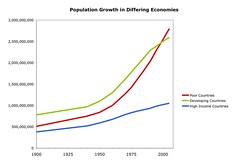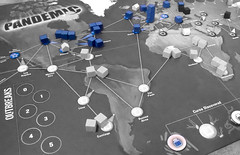These are the vocabulary words from Rubenstein's AP Human Geography textbook.
Chapter-1: Thinking Geographically
Chapter-2: Population
Chapter-3: Migration
Chapter-4: Folk and popular culture
Chapter-5: Language
Chapter-6: Religion
Chapter-7: Ethnicity
Chapter-8: Political Geography
Chapter-9: Development
Chapter-10: Agriculture
Chapter-11: Industry
Chapter-12: Services
Chapter-13: Urban Patterns
Chapter-14: Resource Issues
| 4878087855 | agricultural revolution | the development of farming |  | 0 |
| 4878087856 | arithmetic density | The total number of people divided by the total land area |  | 1 |
| 4878087857 | Census | A complete enumeration of a population |  | 2 |
| 4878087858 | Crude Birth Rate (CBR) | The number of live births in a year for every 1,000 people alive in a society |  | 3 |
| 4878087859 | Crude Death Rate (CDR) | The number of deaths in a year per 1,000 people alive in a society |  | 4 |
| 4878087860 | Demographic Transition | the process of change in a society's population as a combination of medical advances and economic development, affecting a population's desire and ability to control its own birth and death rates |  | 5 |
| 4878087861 | Demography | the scientific study of population characteristics |  | 6 |
| 4878087862 | Dependency ratio | the number of people under 15 and over 64 compared to the number of people in the workforce |  | 7 |
| 4878087863 | Doubling Time | the number of years it takes for an area's population to double |  | 8 |
| 4878087864 | Ecumene | the portion of Earth's surface occupied by permanent human settlement |  | 9 |
| 4878087865 | Epidemiologic transition | The epidemiologic transition is that process by which the pattern of mortality and disease is transformed from one of high mortality among infants and children and episodic famine and epidemic affecting all age groups to one of degenerative and man-made diseases (such as those attributed to smoking) affecting principally the elderly. |  | 10 |
| 4878087866 | Infant Mortality Rate | The total number of deaths in a year among infants under one year old per 1000 live births in a society |  | 11 |
| 4878087867 | Life Expectancy | The average number of years an individual can be expected to live given current social, medical, and economic conditions. |  | 12 |
| 4878087868 | Medical Revolution | medical technology from Europe and North America that was used to eliminate many diseases in the developing world |  | 13 |
| 4878087869 | Megalopolis | Term used to designate large coalescing supercities that are forming in diverse parts of the world. |  | 14 |
| 4878087870 | Natural Increase Rate (NIR) | The percentage growth of a population in a year, computed as the crude birth rate minus the crude death rate (NIR=CBR-CDR) |  | 15 |
| 4878087871 | Overpopulation | a situation in which the number of people in an area exceeds the capacity of the environment to support life at a decent standard of living |  | 16 |
| 4878087872 | Physiological Density | The number of people per unit of area of arable land, which is land suitable for agriculture |  | 17 |
| 4878087873 | Population Composition | Structure of population in terms of age, sex and other properties such as marital status and education |  | 18 |
| 4878087874 | Population Density | A measurement of the number of people per given unit of land |  | 19 |
| 4878087875 | Population Distribution | Description of locations on Earth's surface where populations live |  | 20 |
| 4878087876 | Population Pyramid | A bar graph that represents the distribution of population by age and sex |  | 21 |
| 4878087877 | Sex ratio | the ratio of men to women |  | 22 |
| 4878087878 | Standard of living | Goods and services and their distribution within a population |  | 23 |
| 4878087879 | Total Fertility Rate (TFR) | The average number of children a woman will have during her childbearing years. |  | 24 |
| 4878087880 | Zero population growth (ZPG) | A decline of the total fertility rate to the point where the natural increase rate equals zero. |  | 25 |
| 4878087881 | Agricultural Density | The ratio of the number of farmers to the total amount of land suitable for agriculture (arable land). |  | 26 |
| 4878087882 | Major Population Clusters -- East Asia | 1/4 global population: East China, Japan, Korea, and Taiwan |  | 27 |
| 4878087883 | Major Population Clusters -- South Asia | 1/4 of global population: India, Pakistan, Bangladesh, and Sri Lanka |  | 28 |
| 4878087884 | Major Population Clusters -- Southeast Asia | 600 million people: Indonesia, Philippines, and the river deltas of the Indochina peninsula |  | 29 |
| 4878087885 | Major Population Clusters -- Europe | 600 million people: 50 countries mostly clustered in Western Europe in Germany, Netherlands, Belgium, and France |  | 30 |
| 4878087886 | Industrial Revolution | a series of improvements in industrial technology that transformed the process of manufacturing goods and drastically altered society |  | 31 |
| 4878087887 | Thomas Malthus | (1766-1834) An English economist who argued that increases in population would outgrow increases in food production, which would lead to widespread famine and disease. |  | 32 |
| 4878087888 | One Child Policy | Chinese policy used to control population growth which began in the 1980's and restricted families to having only one child. |  | 33 |
| 4878087889 | Family Planning | The practice of controlling the number and frequency of children conceived usually through the use of contraception or voluntary sterilization. |  | 34 |
| 4878087890 | Sterilization | any process that eliminates a person's ability to produce children |  | 35 |
| 4878087891 | Epidemiology | The branch of medical science that is concerned with identifying, fighting, and preventing disease. |  | 36 |
| 4878087892 | Pandemic | Disease that occurs over a wide geographic area and affects a very high proportion of the population. |  | 37 |
| 4878087893 | Dr. John Snow | (1813-1858) English physician who used hand-drawn data layering on maps of London to identify and treat a cholera epidemic |  | 38 |
| 4878087894 | Sustainability | the level of development that can be maintained without depleting resources |  | 39 |

